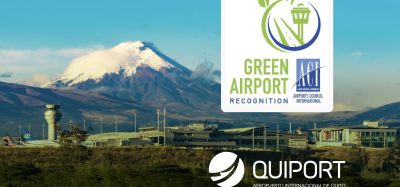Are commercial airports in U.S. responsible for PFAS contamination?
Posted: 11 October 2019 | Environmental Litigation Group | No comments yet
Environmental Litigation Group discusses how the use of PFAS-containing foams at airports is increasing the likelihood of individuals suffering from multiple types of cancer.


Much has been said about contamination with per- and polyfluoroalkyl substances (PFAS) in and around military installations, but the environmental impact of their use in civilian airports remains largely on the side lines.
The term PFAS denotes a large group of manmade fluorocarbon chemicals, of which approximately 650 are in commercial use according to the Environmental Protection Agency’s (EPA) estimates. Due to their unique properties which make them highly resistant to intense heat and repellent to fat, water and oil, PFAS are commonly used in anti-stick pans, stain-free textiles and in fire-extinguishing foam for oil fires.
Fire suppression PFAS-containing products were developed with stringent performance requirements issued by the U.S. Navy. The fire suppressant products were so effective that they were adopted by all branches of the military throughout the 1970s, as well as many civilian operators. The Federal Aviation Administration (FAA) was to issue security requirements for airports to exclusively use PFAS-containing products as a fire extinguishing solution around the same time.
PFOS and PFOA are cancer-causing chemicals
PFOS and PFOA, the two fluoroalkyls contained in the fire suppressant products, have since been found to be associated with various forms of cancer as well as high cholesterol in numerous clinical tests. Although researchers at the Navy Research Laboratory independently ascertained the potential hazards these chemicals might present to humans during the 1970s, the public was not made aware of this until 1998, following a couple trials.
The Department of Defense publicly recognised PFOA and PFOS as threatening to humans in 2000, but the EPA is still to upgrade the two chemicals to the status of “hazardous substances”. This will legally constrain all offending parties to conduct environmental clean-ups in areas contaminated with PFOS/PFOA, as the damage isn’t restricted to firefighting training sites in military bases and airports.
PFAS-contaminated groundwater
Fluoroalkyls can easily penetrate the ground, reach water wells and be carried by rain into local creeks and streams used as water sources by wildlife. The Environmental Working Group (EWG) found over 1,500 drinking-water systems across the U.S. to be contaminated with PFAS, affecting as many as 110 million Americans. To make things worse, PFOS/PFOA are extremely slow to break down, which means they can accumulate to very high concentrations over time.
Are civilian airports safer than military airports?
A lot of civilian airports switched to “safer” PFAS chemicals in the 1980s, spurred on the by growing awareness of the potential threats the military-grade foam represents. This hardly eliminated the danger. In an extensive, nationwide study conducted by the EWG, water wells around dozens of commercial airports tested a concentration of PFOS easily in excess of the minimum EPA safety guideline of 70 parts per trillion, with some reaching values as high as 13,700 ppt. The same sample, taken near Westchester Airport, NY, contained a concentration of over 56,000 ppt. for all PFAS chemicals.
This is indeed lower than what was recorded near some military bases – numbers in the hundreds of thousands – but that should be seen as a result of less frequent exposure to the chemicals, rather than a preventive measure taken by authorities. Most airports in the U.S. haven’t even begun testing water sources for potential contaminants and EPA current regulations regarding PFAS are considered to be very lax.
What we should be doing
There are growing concerns that the more “benign” PFAS formulations U.S. airports are currently using could pose their own health risks, with some researchers claiming that a majority of the 5,000-strong class of chemicals should be considered harmful to humans. To add to this, even the usually stable fluoroalkyls have been shown to sometimes interact with strong reagents – such as the kerosene they are thrown at – and to produce a number of compounds including PFOS and PFOA.
The safest solution would be replacing all fire suppressant products with PFAS-free alternatives, of which there are quite a few currently available on the market. Some perform well enough to have been adopted as standard in countries like Australia, Denmark and Dubai. London Heathrow is currently using a fluorine-free fire extinguishing agent and this has already proven its worth during a 2013 real-life emergency.
The law and updates in U.S. handling
The transition to fluorine-free foam might not even begin in the U.S. for another two years, with Congress passing a law to change FAA regulations restricting airports to use PFAS-containing products for fire training and emergencies as late as October 2018, to take effect by 2021. The U.S. military’s stricter performance requirements might still prevent it from adopting fluorine-free mixtures in the near future.
FAA regulations forcing them to use PFSA-containing products are cited by airport representatives as a defence in the dozens of litigation trials the business is currently involved with, both from aggrieved private individuals and state authorities. Many states have environmental safety limits far lower than what is suggested by the EPA and are holding airports liable to them. Potential clean-up operations, who should also fall under the purview of airport authorities according to states, haven’t begun yet on any significant scale, and a bill forcing responsible actors to do this is still in the works.
Biography
Environmental Litigation Group is an organisation actively involved in the research process on how PFAS negatively affect the human body (many individuals are being diagnosed with kidney, testicular, pancreatic and other types of cancer). The organisation is also assisting with a multi-district litigation involving the PFAS-containing products; helping individuals file for claims.
The International Airport Summit is open for registration!
Date: 19 – 20 November 2025
Location: JW Marriott Hotel Berlin
At our flagship event of the year, we will dive into the future of airport operations, with expert-led sessions on passenger experience, innovative smart technologies, baggage handling, airside operations, data, security, and sustainability.
This is where global airport leaders come together to share insights, challenges, and real-world solutions.
Limited complimentary passes are available for eligible professionals – first come, first served!
Related topics
Accidents and incidents, Aircraft rescue and firefighting (ARFF), Regulation and Legislation, Sustainability, Workforce
Related organisations
Environmental Litigation Group, Environmental Protection Agency, Environmental Working Group, Federal Aviation Administration (FAA)


















